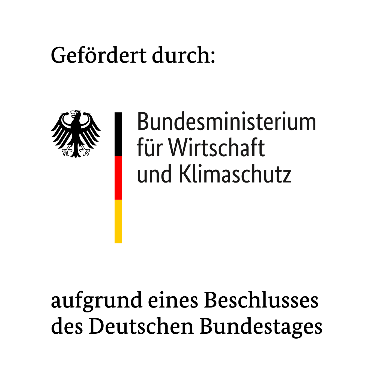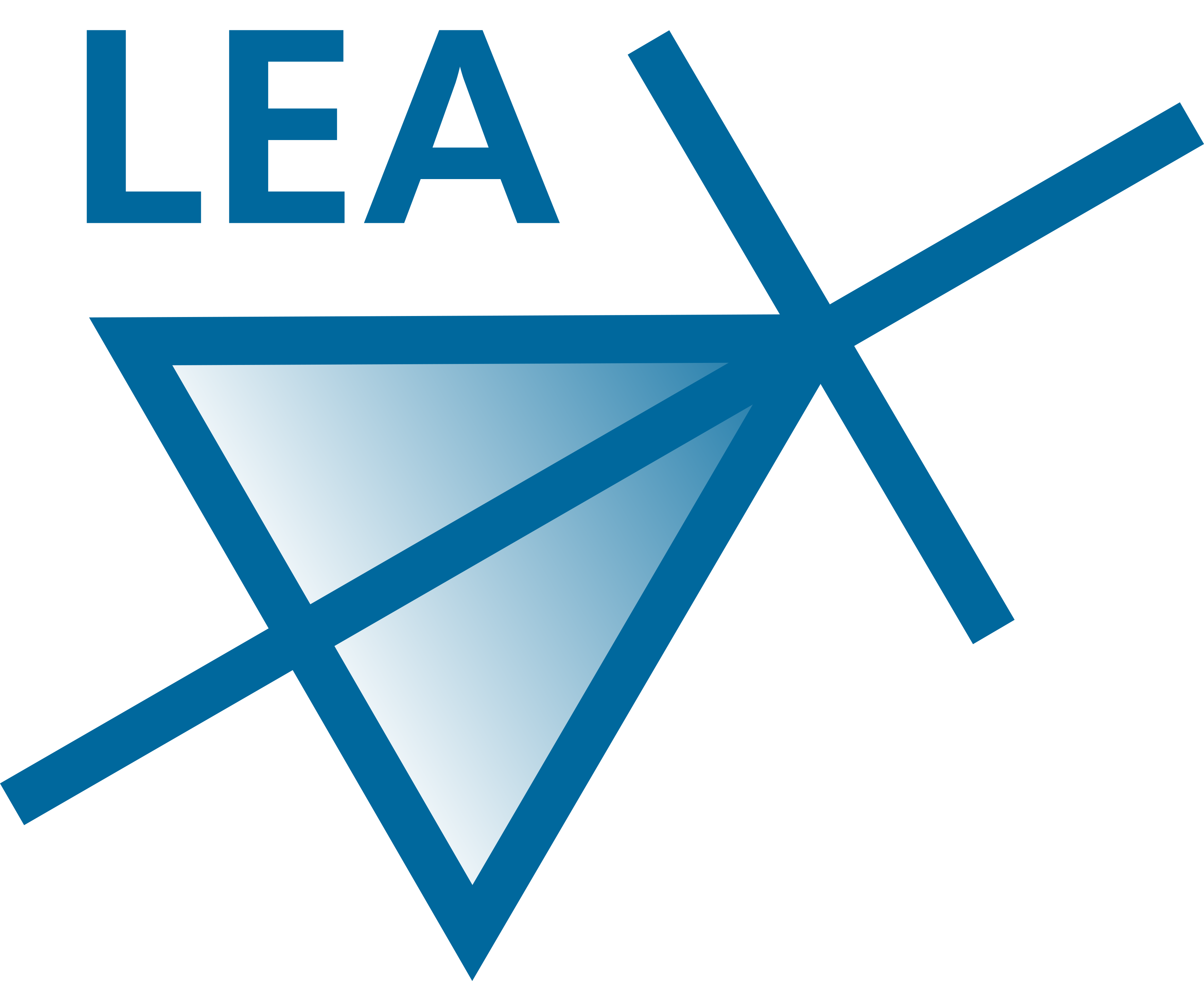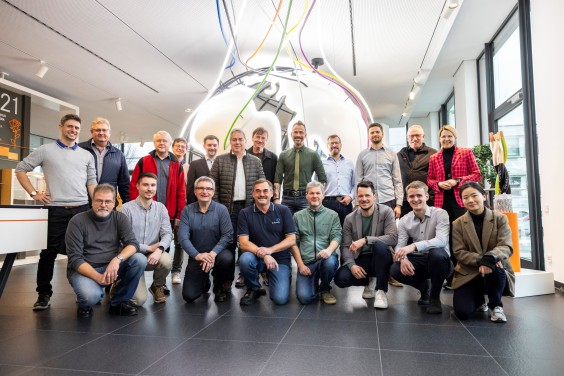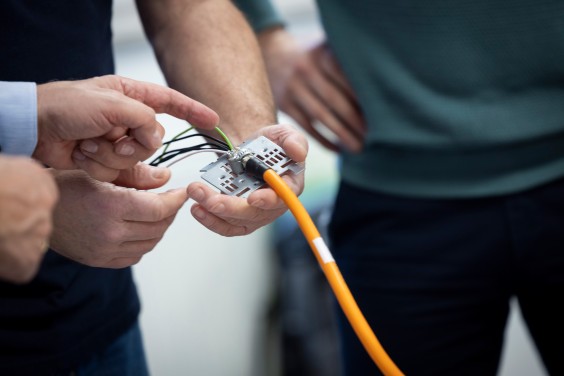Currents on protective earth (PE) and equipotential bonding (PA) in power-electronically dominated power grids (PEPA 2)

Goals of the project
The massive use of power electronics is essential for the success of the energy transition:
On the one hand, the use of power electronics serves to increase energy efficiency in applications. Approximately 2/3 of the electrical energy in industry is converted into electrical drives. The efficiency of electric drives in the manufacturing and process industry is significantly increased when variable-speed drives are used that provide a speed adapted to the respective process and achieve efficiencies of over 98% for the conversion of electrical energy. Since 2021, the energy efficiency class IE2 according to the harmonized standard EN 50598 has been mandatory for frequency converters. In this context, it should also be mentioned that electric drives used across the board can use their sensors to collect data about the energy use of entire production or process systems and thus also allow for comprehensive optimization of energy use. This potential is being leveraged using Industry 4.0 methods, but is the subject of other research projects.
On the other hand, the electrical energy generated by photovoltaic or wind turbines must be converted in order to be able to feed it into the 50 Hz energy supply system. Already today, over 50% of the installed power plant capacity (225 GW) in Germany consists of photovoltaic (65 GWp) and wind turbines (66 GWp). This proportion will (have to) increase massively in the next few years in order to achieve the climate protection goals.
Due to the principle of electronic switching inherent in power electronics, which allows very high efficiency, in addition to the actual useful signals (e.g. a symmetrical, three-phase alternating voltage), additional so-called common mode voltages and currents (English: common mode, for short CM) generated. These CM voltages cause a simultaneous fluctuation of the three external conductor voltages relative to ground potential. This stimulates currents that flow via potential equalization (PA) and protective earth (PE) conductors and can therefore trigger upstream FI circuit breakers (RCDs = Residual Current Device). In addition, the CM currents can flow via structural parts, pipes or shielding cables of data lines and lead to disruptions or electrochemical corrosion.
There are two CM voltage sources in the frequently used frequency converters, which consist of a rectifier (GR) and a pulse inverter (PWR). As a result, CM currents are excited by both the GR and PWR, which are superimposed. In the case of a frequently used diode GR, the CM currents caused by this have frequencies of 150 Hz, 450 Hz, 750 Hz etc. In the case of a PWR, frequencies in the range of the pulse frequency and its multiples are excited.
In addition, excitations from EMC filter circuits can occur, which can then also cause resonant CM currents. Furthermore, harmonics in the mains voltage or asymmetries in the X capacitors can also lead to CM currents, which then flow to PE via the Y capacitors of the EMC filters.
The causes and manifestations (frequencies) of PE/PA currents are very diverse, which makes their understanding and therefore their reduction difficult. In practice, purely phenomenological measurements are often carried out in the form of effective values, which often result in very high values of several tens of A, but naturally in this form do not allow any indication of the specific cause. Often it is not even possible to assign the PE/PA currents to a specific device, let alone define suitable remedial measures.
In addition, in recent years, in accordance with DIN VDE 0100-530, type B RCDs have been increasingly used in networks with power electronics, which can detect fault currents from DC (0 Hz) to 100 kHz and which can also be used with PE/ Trigger PA currents in the higher frequency range.
In the predecessor project “PEPA 1” (FKZ: 03EI6007A), the main causes and propagation paths of PE/PA flows were systematically examined for the first time.
In the follow-up project “PEPA 2”, the systematic analysis carried out so far will be expanded to include more complex systems, such as those that predominantly occur in practice, thereby completing the understanding of the mechanisms of action and remedial measures. From today's perspective, no further continuation is planned within the framework of the funding from the BMWK.
Project partner
|
TU Darmstadt Lab for Power Electronics and Control of Drives (LEA) |
Prof. Gerd Griepentrog
Zhaoqing Zhang, M.Sc. Andrea Zingariello, M.Sc. |
| SEW Eurodrive GmbH & Co KG |
Michael Burger, Dipl.-Ing. michael.burger@sew-eurodrive.de Thomas Stork, Dipl.-Ing. thomas.stork@sew-eurodrive.de Benjamin Schuppel, M.Sc. benjamin.schuppel@sew-eurodrive.de |
| Dovitech |
Pöss Hans-Joachim, hjp@dovitech.dk Dr.-Ing. Martin Weicker mwe@dovitech.dk |
| Danfoss |
Christian Mieslinger Christian.Mieslinger@danfoss.com Ralf Merwart ralf.merwart@danfoss.com Morten Andersen morten_andersen@danfoss.com |
|
MAGNETEC GmbH Gesellschaft für Magnet Technologie |
Benjamin Kessler Benjamin.Kessler@magnetec.de |
| U. I. LAPP GmbH |
Stefan Hilsenbeck, Dipl.-Ing. stefan.hilsenbeck@lapp.com Maximilian Christians Maximilian.Christians@lapp.com |
| Bender GmbH |
Helmut Muhm Helmut.Muhm@Bender.de |










